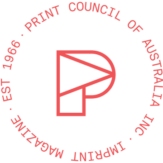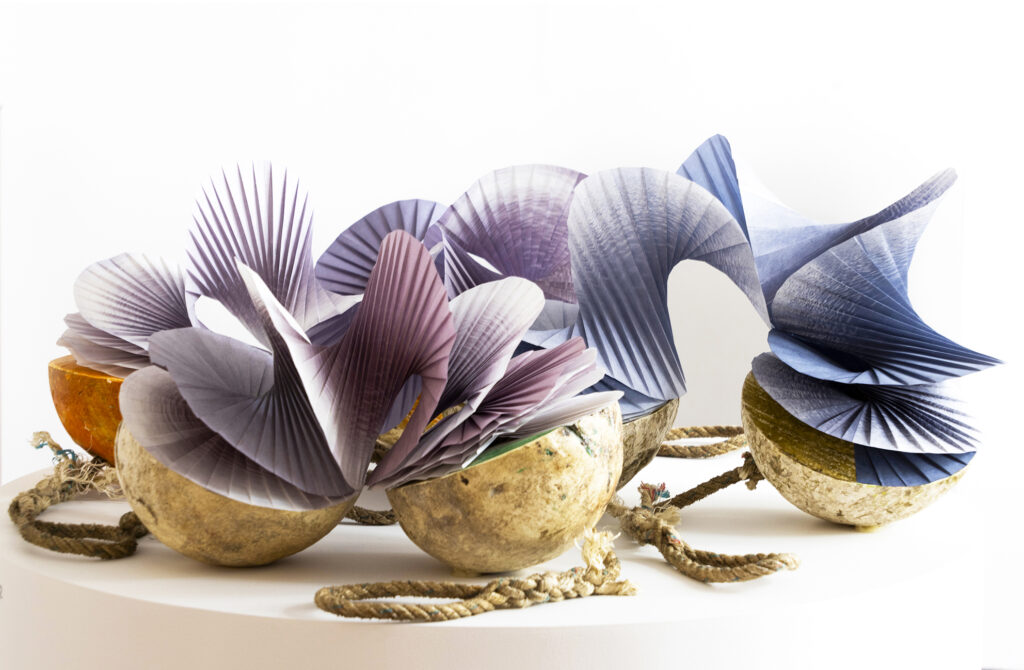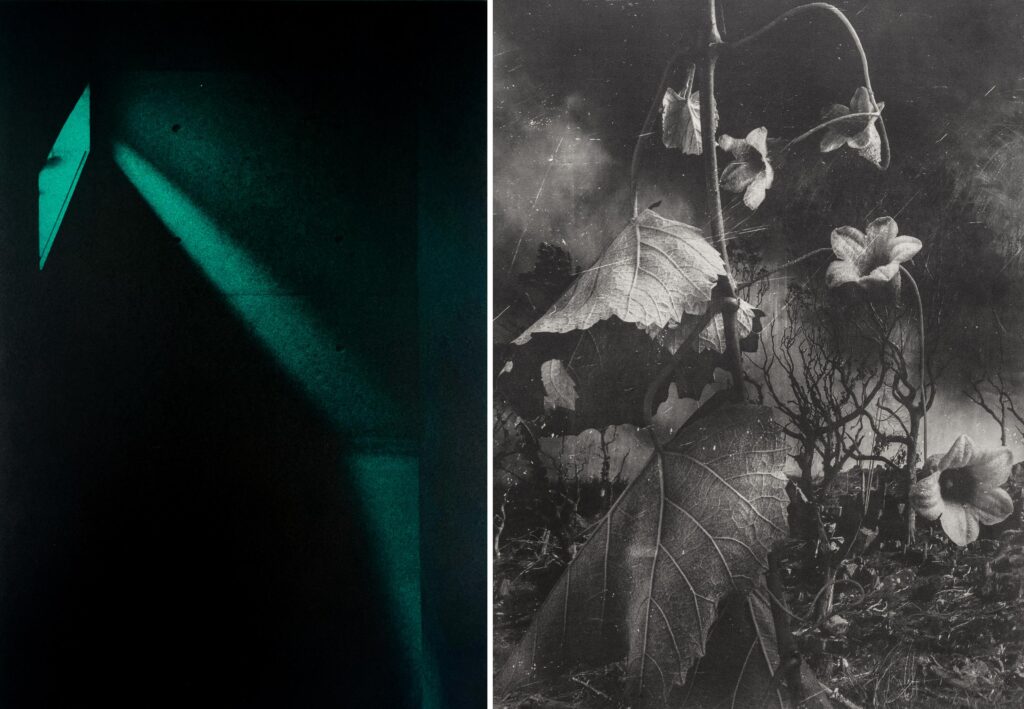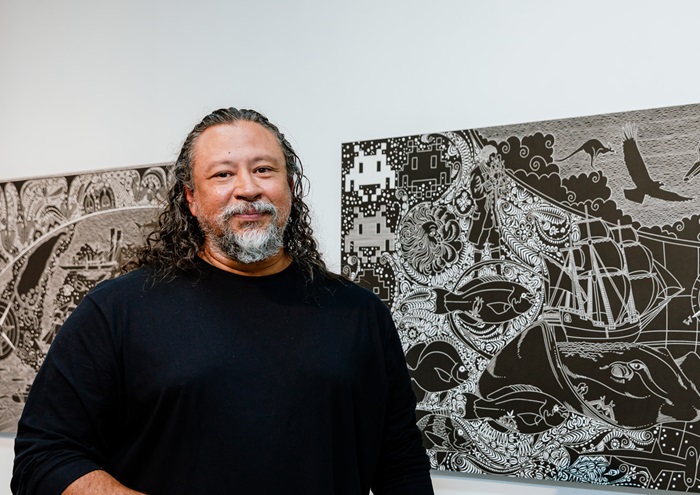Top:
Left: Ruth Johnstone, Leaf Gallery [detail], 2024, copper, 45 x 180 x 16 cm. Right: Lesley Duxbury, Nothing is so transient as a tree#1 [detail], 2024, artist book inkjet print on paper, and redgum, 14 x 18 x 1 cm.
Below:
Lesley Duxbury, studio view of Out of Time#4 (2024, inkjet print on tracing paper, acrylic, pine, 30 x 30 x 20.5 cm).
Lesley Duxbury, studio view of Nothing is so transient as a tree#2 and Out of Time#4.
Lesley Duxbury, Nothing is so transient as a tree#1, 2024, inkjet print on paper, redgum, pine, 30 x 45 x 14 cm
Lesley Duxbury: studio view of Nothing is so transient as a tree#2.
Ruth Johnstone: Leaf Gallery [detail], 2024, copper, 45 x 180 x 16 cm
Ruth Johnstone: Forest Walking, 2024, eucalypt, copper, paper, 164 x 200 x 40 cm
Ruth Johnstone: Forest Walking [detail], 2024, eucalypt, copper, paper.
Ruth Johnstone: studio view.
All images courtesy of the artists
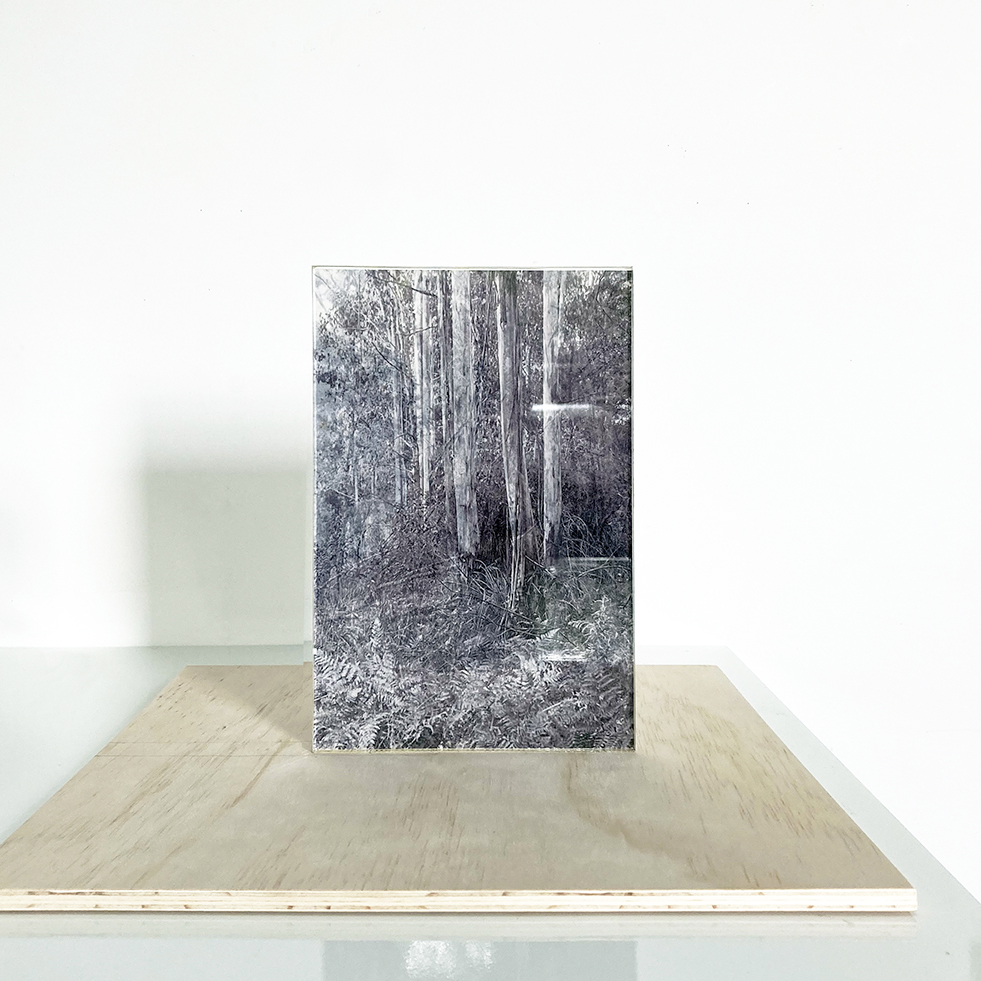
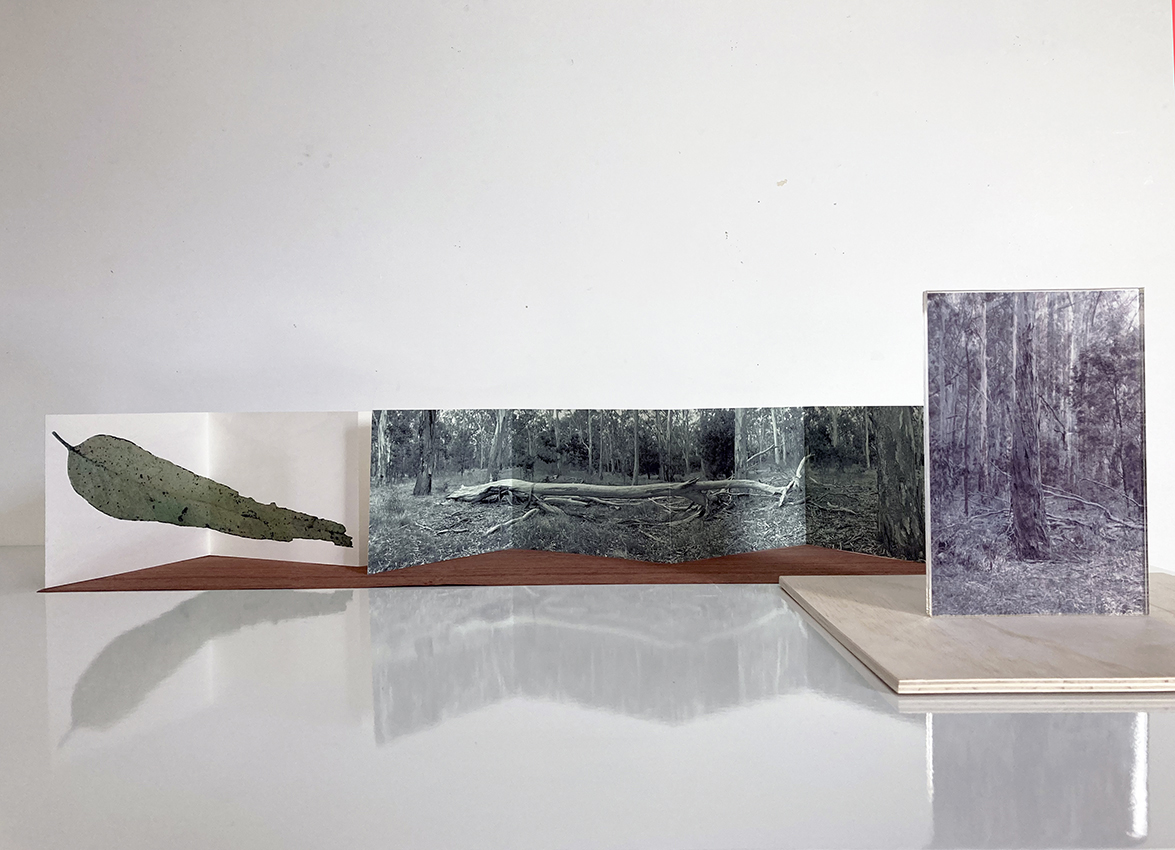
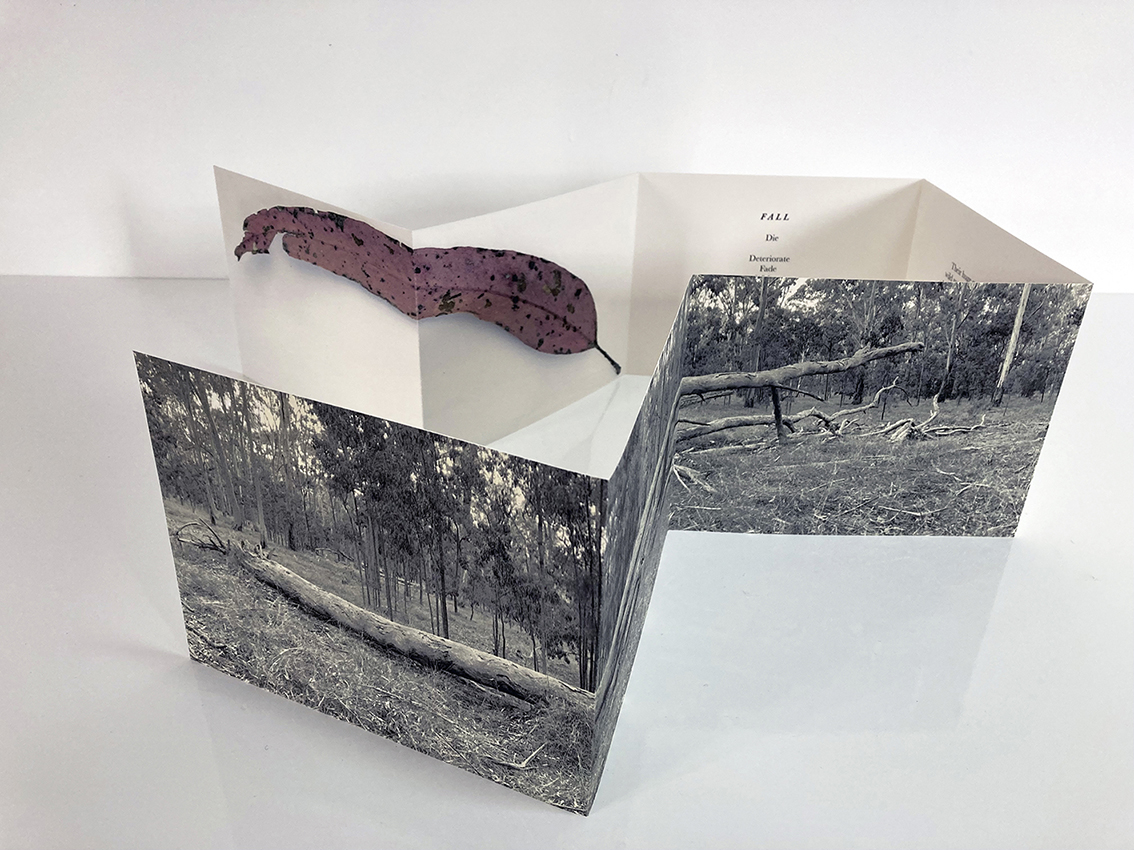
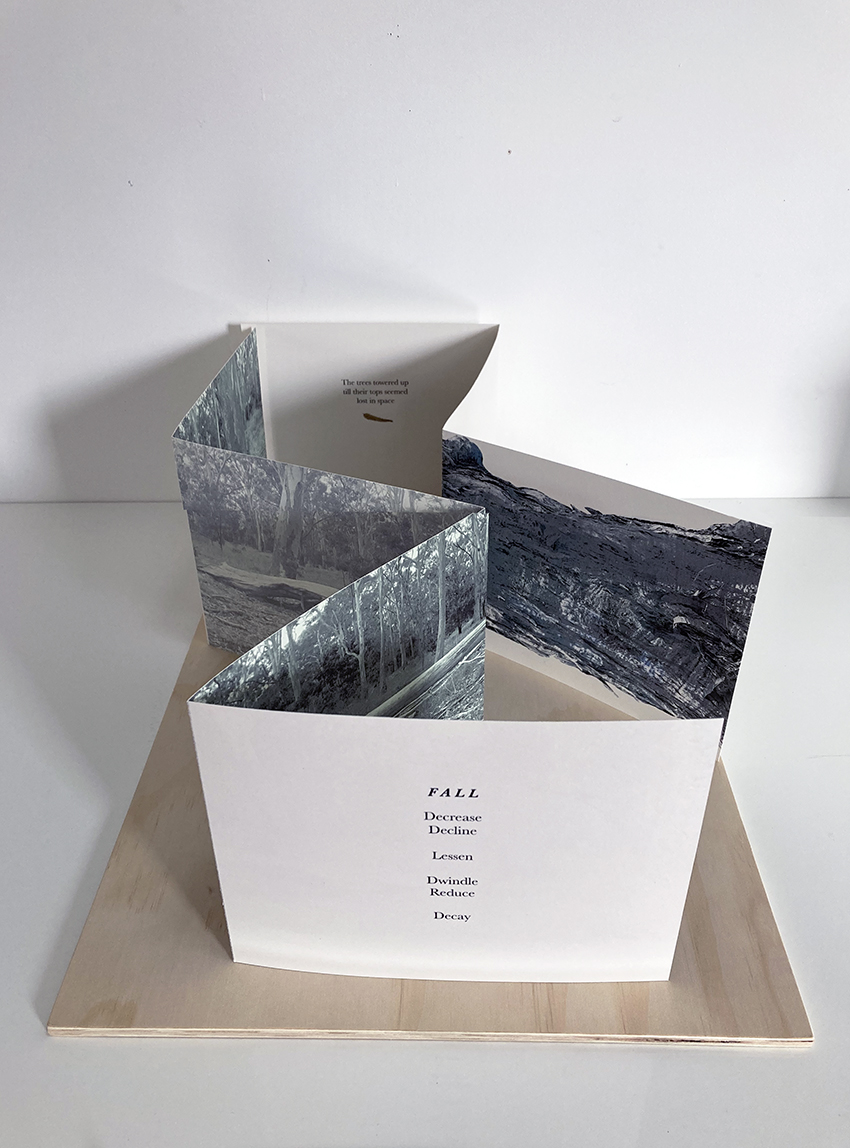
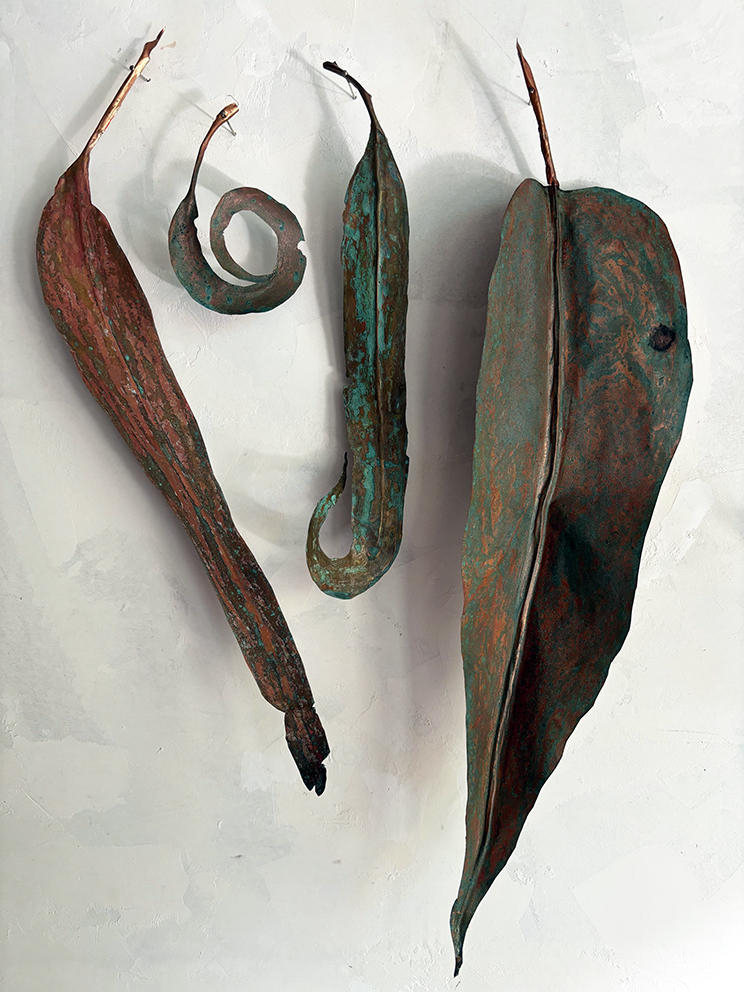
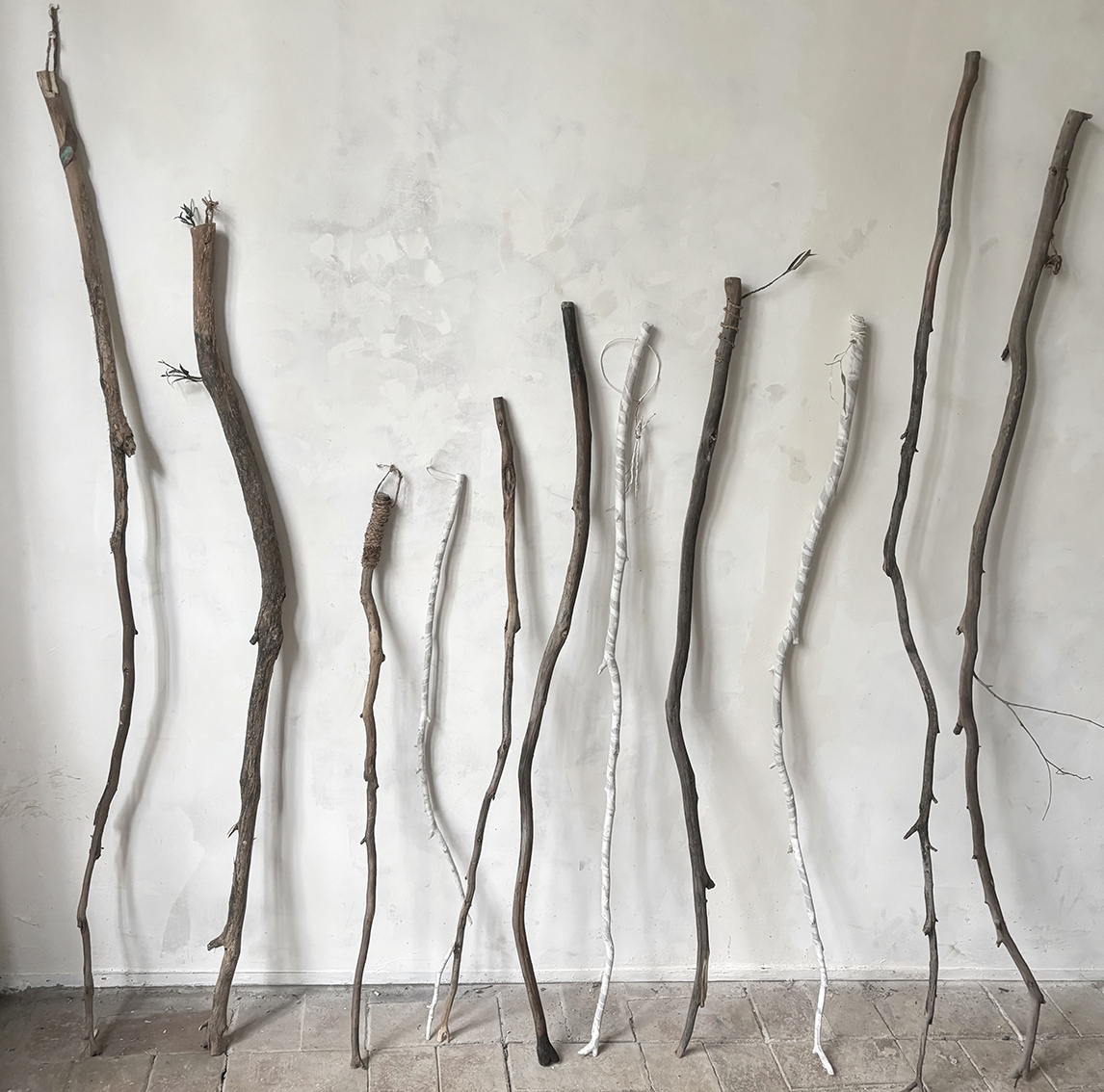
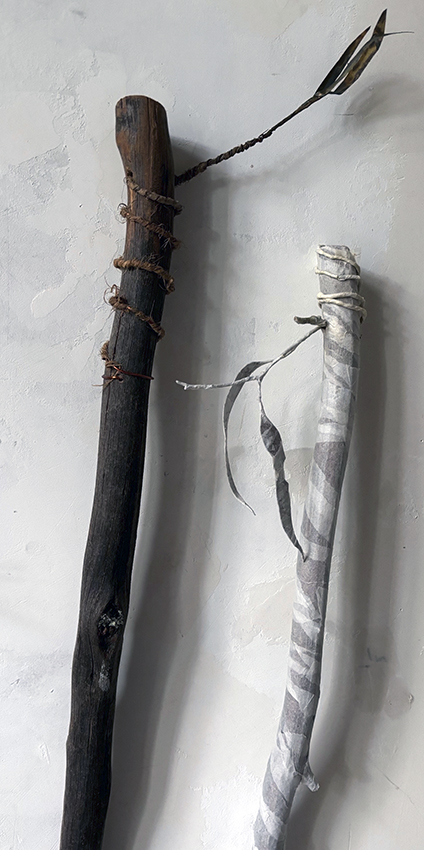
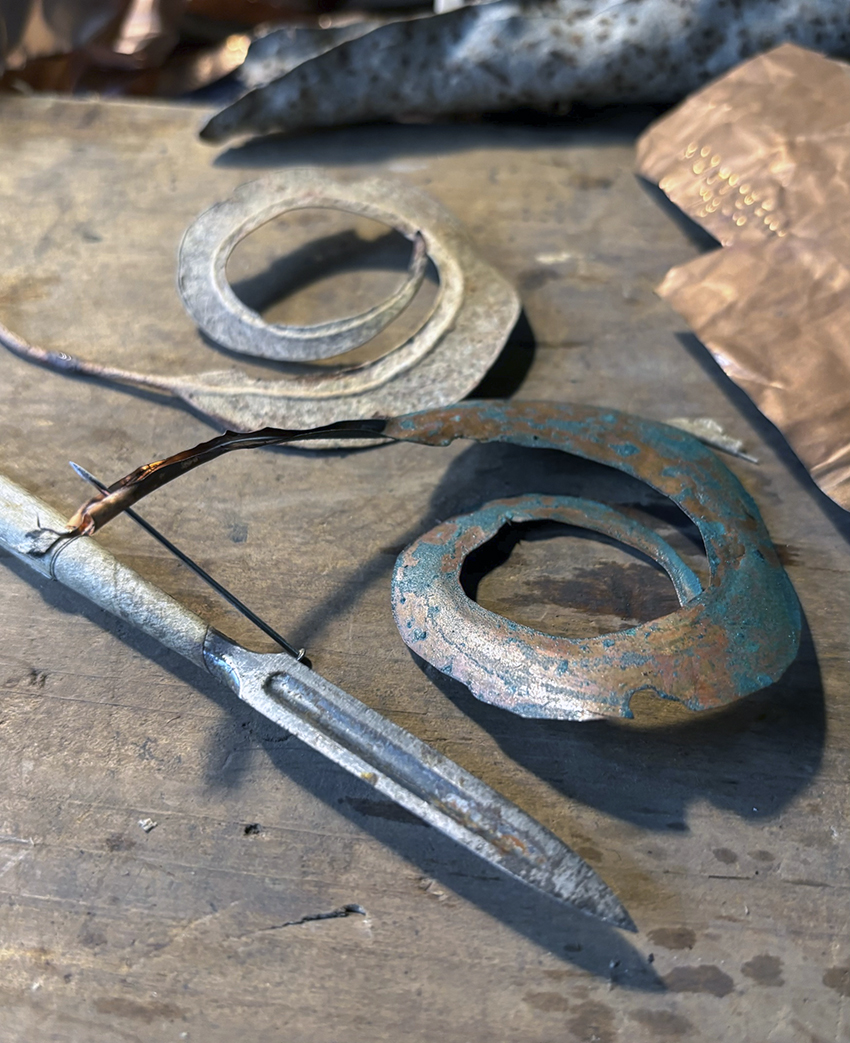
Lesley Duxbury and Ruth Johnstone first met in the mid-1980s at the Victorian Print Workshop (now the Australian Print Workshop) in Melbourne. Between then and the present they have taught Printmaking in the same educational institutions, most recently in the School of Art at RMIT University, from which they both retired in 2017. During their time at RMIT, they headed off to the Victorian bush at weekends – Ruth close to Mount Buffalo in the North and Lesley to Briagolong, a small town at the foothills of the Australian Alps in the East, both fire-prone areas in eucalypt bushland. Following retirement their weekend getaways became their permanent homes. Though now separated by the highest mountain range in Australia, they remain friends, colleagues and collaborators.
Both Lesley and Ruth work and live amongst eucalypts. The ubiquitous eucalypt which has come to mean many things to them is honoured when it survives to a great age, yet its size and materiality has caused it to be felled for human needs, and of course it is renowned for causing raging bushfires. All the varied qualities of eucalypts influence their most recent work. Their common interest led them to exhibit Embracing the Eucalypt in Briagolong in early 2023, followed by a variation of the work in Embrace the Eucalypt, at the Benalla Art Gallery from May to July this year. This PCA exhibition, Re-embracing the Eucalypt is the third iteration through which the artists address their ongoing theme.
At the end of each day, I run or walk 5kms of narrow tracks through the Briagolong Forest Red Gum Reserve, a remnant of what was once a vast grassy woodland of Gippsland Red Gum, (E. tereticornis sub. mediana) that stretched from the Strzelecki Ranges in the West to the Snowy River in the East. Here in this rigidly delineated, protected reserve[1] the trees are slowly regenerating having been decimated by logging and land-clearing for dairy farms and agriculture in the 19th century and pine plantations more recently. As well as the densely growing trees I run through, I also pass massive stumps, and ghostly-white fallen trunks among the spindly growth of saplings, reminding me of the continuing, vulnerability of these critically endangered trees, the concern of the artist books, Nothing is so Transient as a Tree.
Eucalypts have long fascinated newcomers to Australia, from explorers such as Major TL Mitchell in the first half of the 19th century to John Eaton, a photographer in the early 20th century, who like me migrated from England. Through his iconic photographs of expansive landscapes, sparsely dotted with monumental eucalypts, Eaton was considered a gifted interpreter of the Australian landscape[2]. My Out of Time series, takes a selection of his images along with further images of 19th century photographers of the Gippsland bush, to permeate my own photographs of the Briagolong Red Gum Reserve, melding the past with the present through ghostly renditions.
(Lesley Duxbury, 12 July 2024)
On my frequent walks up and down the mountain slope from house to studio I’m drawn to the forest floor for ideas as well as materials and processes. Gatherings from the carpet of eucalyptus leaves led me to make a series of salt and vinegar tortured copper leaves. Each collected leaf has been nibbled, infested or otherwise uniquely marked or distressed and is a testament to the dynamism of the giant eucalyptus forest canopy. The idea of mimesis, in this case the act of recreating a natural form using printmaking-familiar corroding processes to make an equally fragile object, is the focus for the Leaf Gallery series.
The Forest Walking series is also largely made from forest floor falls, augmented with the leftovers and spoils of paper and copper in my studio. These wooden walking staffs, while reflecting my moods and needs as a collector and a walker, are intended to maintain much of their integrity as natural and vulnerable forms. Rather than mimesis, in this case mimicry inspires the enabling of these self-sprung branches to perhaps take a walk by themselves.
Entwined furthers an enquiry into the integrity of nature if it were set apart from the presence of humans. The pair of leaves embrace each other in both the original pair and their copper copy. In the remaking, I am alert to a personal examination of my intervention in the forest ecosystem. This forest, while appearing to be in a healthy state of recovery, has been burned and logged many times since the Pbangerang people gathered here in Spring to make string and ropes from the bark of Red Stringybark (E. macrorhyncha) and we continue to reshape this landscape. With this history in mind, how do I best observe, conserve and create?
(Ruth Johnstone, 14 July 2024)
Through extensive fieldwork, the Ruth and Lesley employ close direct observation and interrogation of their local surroundings to record their respective eucalypt environments through the mediums of photography and photographic printmaking, collage and objects, and works on paper to create new bodies of work. Their focus is on the environmental references that deepen understanding of these habitats.
Lesley Duxbury and Ruth Johnstone
_
Re-embracing the Eucalypt, by Lesley Duxbury and Ruth Johnstone, is at the Print Council of Australia Gallery, Studio 2 Guild, 152 Sturt Street, Southbank, 13-30 August. Opening reception 15 August 5-7pm
www.printcouncil.org.au/pcagallery/
_
NOTES
[1] In 2008 Peter Garrett then Minister for the Environment, Heritage and the Arts, included the Gippsland Red Gum Grassy Woodland in the critically endangered list
[2] Cato, J. 1955, ‘The Story of the Camera in Australia’, Georgian House, Melbourne. P. 156.
—
Join the PCA and become a member. You’ll get the fine-art quarterly print magazine Imprint, free promotion of your exhibitions, discounts on art materials and a range of other exclusive benefits.
